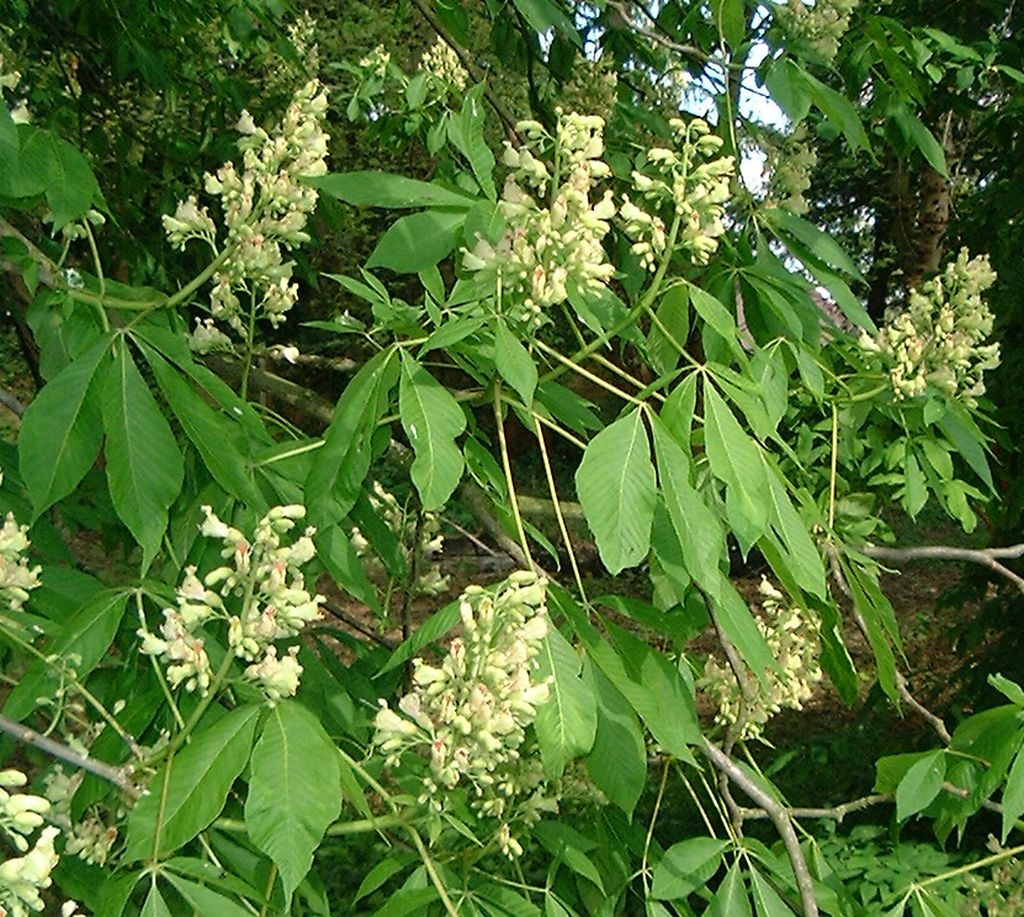#40 SWEET BUCKEYE
Aesculus flava

County Champion
This tree is in the centre of The American Section.
| Distribution: | Ohio valley, Appalachian Mountains, eastern USA. Alternative name Yellow Flowered Chestnut. The name Buckeye is a translation of the name given to the tree by the indigenous people of North American because the colour and shape of the fruit resemble the eye of a Buck or Deer. | ||
| Planting Date: | December 1919 from W Clibran & Sons, Oldfield Nursery, Altringham Cheshire (grafted at 30 cm onto Aesculus pavia). Known as Aesculus octandra ‘Whitley’ in 1919. | ||
| Growth Habit: | 20 to 48 m, narrowly domed | ||
| Bark: | Smooth with lenticels and wrinkles, becoming scaly and coarse later. Twigs have faintly rank odour. | ||
| Leaf: | Palmately compound of 5 (rarely 7) pointed leaflets 15 to 25 cm long, and broad. Buds are not sticky like those of our native Horse Chestnut. | ||
| Flowers: | Pale yellow, to yellow-green, flowers of 2 to 3 cm long in upright panicles of about 15 cm long, in late Spring. Stamens are hidden within the four petals. | ||
| Fruit: | Shining brown ‘conker’ contained within a round to oblong, leathery, green case that is devoid of prickles. The case dries, opens, and releases the seed. Sometimes just one, mostly two, maybe three. | ||
| Toxicity: | Poisonous to humans but can be made edible through a leaching process. | ||
| Tree size and height in April 2023: | Height 16.5 m and girth 211 cm. | ||
| Uses: | Indigenous Americans once used buckeyes for medicinal purposes. The nuts would be crushed and kneaded to create a salve for cuts and rashes. Today, some believe this compound can relieve rheumatism and arthritis pain. The soft wood is used for crates, boxes and inexpensive furniture. | ||
| Plant Hunter: | It was possibly John Bartram, who had a farm in Philadelphia and went plant hunting for specimens to send to subscribers in England. He creates Bartrams Garden, the oldest surviving Botanic Garden in North America. In 1765 George 3rd awarded him a £50 annual pension, as ‘King’s botanist for North America’. | ||
| Introduction Date: | 1764 | ||
Rated County Champion by The Plant Register in April 2023 by virtue of its height and girth.